Fumigation is a process that uses chemicals to kill pests in your home. This method is typically used to get rid of rodents, bugs, and other unwanted critters. If you’re thinking about fumigating your house, you’re probably wondering how much it will cost. Read on to find out the average cost of fumigation services.
What Is Fumigation?
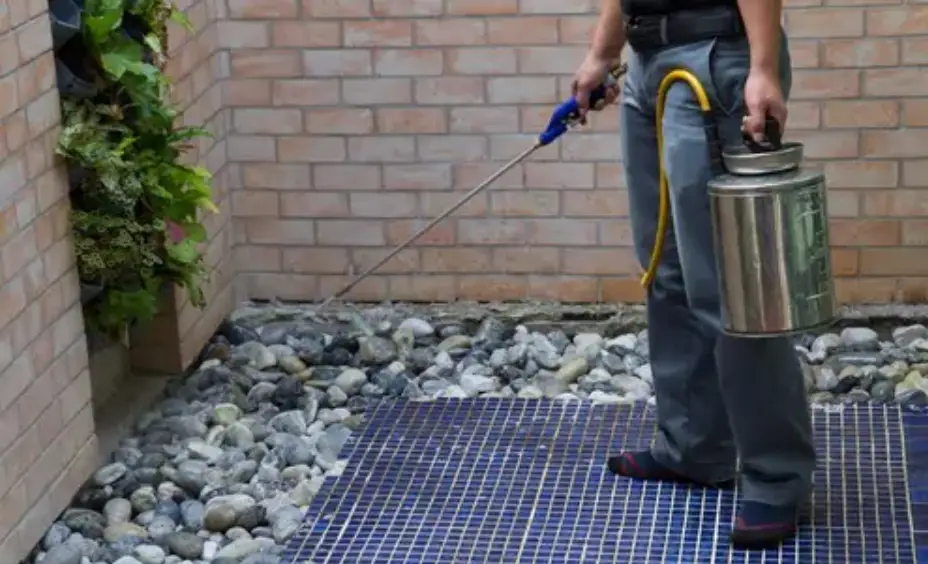
Fumigation is a process that involves the release of gaseous chemicals, also called fumigants, into an enclosed area to eliminate pests like termites, bed bugs, and other household insects. Fumigation can be used effectively both inside and outside of structures and dwellings. It includes steps such as selecting the right chemical for fumigating, prepping the area for treatment, sealing off windows and doors to create an airtight environment (known as tenting), introducing the fumigant gas into the space, and ventilating afterwards. These steps vary depending on the size of the house or structure being treated. [1]
When Do You Need Fumigation?
Fumigation is a form of pest control that is used to rid an infested area of pests such as insects, rodents, and other vermin. It involves using poisonous gas or chemicals to kill the pests and eliminate them from your property. The cost of fumigation typically depends on the size of your home and can range anywhere from several hundred dollars up to thousands of dollars.
There are certain situations in which it may be necessary to fumigate a house. These include instances in which there is an infestation of termites, bed bugs, cockroaches, fleas, ants, or any other type of invasive pest.
How Much Does Fumigation Cost?
Fumigation is a process of using different gasses to purify the air and environment in a home. This can be done for pest control, such as termites, or to eliminate mold spores. The cost associated with fumigation varies, depending on the size of the house and other factors.
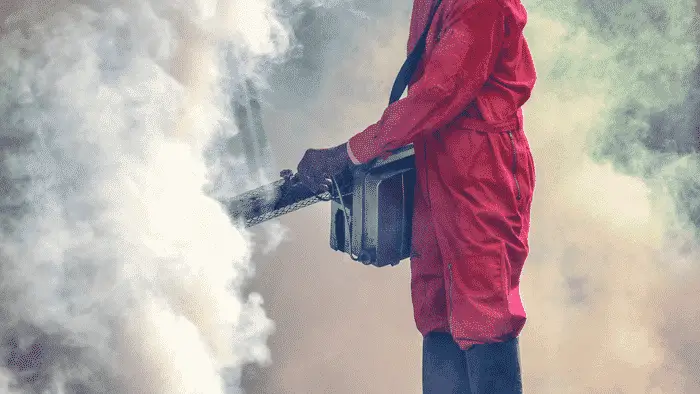
When it comes to fumigating an entire home, you can expect the cost to range from $1,000-$3,000 on average. However, this price range may vary based on the specific services required. [3]
Numerous Components Deciding the Cost of Fumigation
House Size
One of the principal elements in gauging how much it will cost to fumigate a home is its size. A larger house may require more chemicals and take longer to fumigate, resulting in a higher total cost.
Location
Fumigation costs also depend on where you’re located because prices vary by region. In areas with a high demand for pest control services, contractors may charge more due to increased competition or simply because they can.
Type of Pest
Different types of pests require different types of treatment, so if there is an infestation inside your home, the type of pest will affect the cost. For example, eliminating bed bugs or termites may be more expensive than getting rid of other common household pests such as ants and cockroaches.
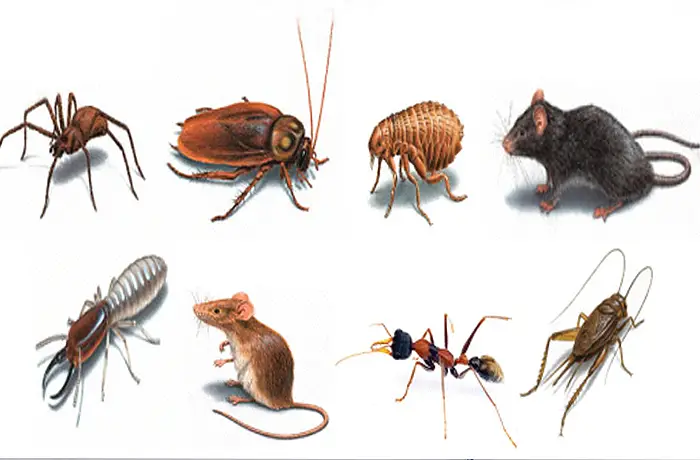
Structure of Home
The structure of the home may also affect the cost. A house with a basement or multiple stories may require more labor and additional chemicals to fumigate, resulting in higher costs.
Severity of Pest Infestation
The severity of the infestation will also affect the cost. The more severe or widespread the pest problem, the more chemicals and labor may be needed, resulting in higher costs. Additionally, if there is an active infestation, homeowners may have to pay for additional treatments to fully eliminate it.
Additional Services
Fumigation often requires additional services such as sealing cracks and crevices, cleaning up debris and residues or doing other repairs. These services can increase fumigation costs depending on how much work needs to be done.
Duration of Fumigation Process
The duration of the fumigation process also affects the total cost. Longer fumigations require more labor, supplies and equipment, resulting in higher costs.
Fumigation Method and Frequency
The type of fumigation method used and the frequency of treatments can also affect the cost. Some methods require specialized equipment or additional chemicals, which can increase costs.
Additionally, if multiple treatments are required to fully eliminate a pest problem, homeowners may have to pay for more than one application.
Overall, there are many factors that can influence how much it will cost to fumigate a house. By understanding these factors and taking them into consideration when hiring a pest control service, you can ensure that you get the best value for your money. [4]
How to Fumigate a House
Pick a Fumigation Product
The first step in fumigating your home is to pick the right product. Fumigation products come in different forms, from aerosol cans to granular baits and liquids. Consider your budget and the type of pests you are trying to control when choosing a fumigant.
Prepare the Home for Fumigation
To prepare the home for fumigation, it’s important to remove all food items, pets and people from the area that will be treated. Caulk any cracks or crevices where bugs may enter as well. Make sure windows are closed tightly and seal up any gaps around doors or AC units as well.
Set Up Tenting
Once you’ve prepped the home, you’ll need to set up a tenting system. This involves placing large plastic sheets over the building and sealing them in place with tape. This creates an airtight seal that will help keep the fumigant inside and pests out.
Execute Fumigation

Once the tent is in place, it’s time to execute the fumigation. Depending on the product chosen, this could be done by applying aerosol cans or sprinkling granules around the perimeter of your home. Make sure to read all instructions carefully when using any fumigant product.
Ventilate Home
After successful execution of fumigation, you must properly ventilate your home before re-entering it. This includes opening all windows, turning on exhaust fans and wiping down surfaces that may have been exposed to the fumigant.
Re-evaluate Pest Problem
Finally, once you’ve successfully fumigated your home, make sure to re-evaluate your pest problem.
Preparing for Fumigation
Before any fumigation can take place, you must prepare the area to be treated. This includes packing up all food and medications, removing pets, plants and potted plants. It’s important to remove all items that may absorb or interact with the gas used in the fumigation process. You will also want to cover any furniture, mattresses or other large objects that are too difficult or expensive to move out of the structure before fumigation begins.
Once you have completed these steps, it’s time to call a professional pest control company for an estimate on how much it will cost to fumigate your home. Depending on the size of your house, the type of pests present and other factors such as local ordinances, the price for fumigation can range from a few hundred dollars to several thousand. It’s important to get an accurate estimate of the total cost before committing to any fumigation services.
The pest control company will also provide information on how long it will take to complete the entire process and what steps they will be taking during the fumigation process. This is important information that you should familiarize yourself with prior to allowing anyone into your home or business for extermination purposes.
Fumigating a house is a necessary evil if there are pests present, but understanding how much it costs and properly preparing can help you budget accordingly and make sure the job gets done right.
Types of Fumigation
Gas Fumigation
This type of fumigation is generally used to rid an entire house or building of pests. The cost of gas fumigation depends on the size of the structure, and can range from $1,000-$2,500.
Heat Fumigation
Heat fumigation is similar to gas fumigation in that it is used to eliminate pests from a structure but instead uses heat to do so. This method is often used for bed bugs or termites, and costs vary greatly depending on the size of the area being treated. Generally speaking, heat fumigation can cost anywhere from $500-$3,000.
Tenting
Tenting is a form of gas fumigation that involves covering a home or building in plastic tarps and pumping a gas into the area. This method is used to fumigate larger structures, including apartment complexes, hotels, and commercial buildings. The cost of tenting can range from $2,000-$10,000 depending on the size of the structure being treated.
Spot Treatments
These treatments are used for smaller areas that need to be fumigated and involve spraying or injecting a pesticide directly onto the affected area. Spot treatments typically cost between $50-$500 depending on the severity and size of the infestation.
Overall, it is important to keep in mind that while fumigation may seem like an expensive process, it could end up saving you money in the long run by eliminating pests and preventing future damage to your property. It is also important to hire a qualified professional who can provide effective and safe fumigation services. The cost of fumigation can vary greatly depending on the size and type of infestation, so make sure you get an accurate estimate before making any decisions. With proper care and maintenance, you can keep pests away for good! [6]
Alternatives to Fumigation
Liquid Treatments
A pest control technician can apply liquid treatments to the exterior and interior of your home.
Sprays
Another possible alternative to fumigation is spraying for pests. This involves using an insecticide that targets specific insects such as ants or roaches, then waiting for them to die off. Spraying can be done both indoors and outdoors, though indoor sprays work best against a variety of different types of insects. Although spraying may be more expensive than traditional fumigation, it often requires fewer applications over time and is generally safer than chemical-based methods.
Traps
Traps are one of the oldest forms of pest control. They are designed to lure pests in with bait and then capture them when they enter the trap. This can be an effective way to eliminate a localized infestation without using any chemical treatments. Magnetic traps, fly strips, and glue boards are all examples of traps that can be used to remove pests from your home without the need for fumigation.
Exclusion
Exclusion is a great way to prevent future infestations without having to resort to chemical treatments or fumigation. Exclusion involves sealing up cracks and crevices around windows, doors, pipes, vents, etc., as well as ensuring screen doors and window screens are properly sealed so pests cannot enter your home. This can be done both inside and outside of your home, providing a physical barrier that will help keep pests from getting in.
Dust Treatments
Dust treatments are a great way to get rid of pests without having to use toxic chemicals. Dusts can be applied in hard-to-reach places such as cracks and crevices, where traditional fumigation may not reach. They work by disrupting the exoskeleton of insects, effectively killing them off. Dusts are relatively inexpensive and safe for both pets and humans.
Baiting Treatments
Baiting treatments involve using baits and lures to attract pests away from your home. Baits can be used indoors or outdoors, and they work by attracting the pests to an area where they can then be eliminated with a pesticide. Baiting is an effective way to get rid of a localized infestation without having to resort to chemical treatments or fumigation.
Overall, there are many alternatives to fumigating a house for pest control. These include liquid treatments, spraying, trapping, exclusion techniques, dust treatments, and baiting treatments. Doing one or more of these methods in combination with regular preventative maintenance measures such as sealing cracks and crevices around your home can help you reduce the need for costly and potentially hazardous fumigation treatments.
Ultimately, the best pest control solution will depend on your individual needs and the severity of your infestation. Consulting with a pest control expert can help you determine which method is best for your home. With any luck, you may be able to eliminate pests without having to resort to fumigation at all!
Avoiding the Need for Fumigation
The best way to avoid the need for fumigation is to make sure that you are doing what you can to prevent pests from entering your home in the first place. This includes making sure that you seal off any potential entry points, such as windows, doors, and vents.
Additionally, it’s important to regularly clean and vacuum your home on a regular basis in order to reduce the likelihood of pests entering. Doing routine checks around the perimeter of your house for signs of pests or damage can also be helpful in avoiding an infestation before it starts.
If you do notice any signs of pest activity or damage, it may be a good idea to contact professional pest control services right away. They will be able to provide treatment quickly and efficiently, and may even be able to help you avoid the need for fumigation altogether.
Do I Need Fumigation?
Fumigation is an effective way to eliminate many types of pests from a home or business. It is important to understand what types of pests, or infestations, can be eliminated through fumigation, as well as the cost involved in this process.
Pests that can be eliminated by fumigation include termites, bed bugs, cockroaches and stored product insects like ants and beetles. These pests often require extensive treatments that may involve multiple forms of pest elimination including dusting, gels, and baits. Fumigation is used when these efforts are not successful in eliminating the infestation.
The cost of fumigation can vary depending on the size of the area that needs treatment and the type of pest involved. Generally speaking, fumigation will cost between $1,000-$2,500 for an average sized home; however, more severe infestations can cost up to $4,000 or more for larger residences. Commercial fumigation services may also require additional fees for containment and disposal of the chemicals used.
It is important to hire a professional licensed pest control operator who has experience with fumigation in order to ensure the process is done correctly and that the pests are eliminated completely. Doing so will help save time, money, and hassle in the long run.
FAQ
Can you fumigate yourself?
The short answer is no. Fumigation is a specialty service which requires the use of highly toxic chemicals and should only be done by licensed professionals. Trying to fumigate your home yourself can lead to serious illness or even death. It’s important to hire an experienced professional who knows how to properly handle these substances for maximum safety and effectiveness.
What areas does fumigation treat?
Fumigation can be used to treat infestations in all parts of the house, from attics and basements to bedrooms and bathrooms. Depending on the type of pests being treated, different types of fumigators may need to be used for different areas in order to ensure full coverage of the affected area.
How long does the fumigation process take?
The duration of the fumigation process depends on a variety of factors, such as the size and type of structure being treated, the type of pest infestation and the type of chemical being used. On average, most treatments last anywhere from 8-24 hours.
How much does it cost to fumigate a house?
The cost to fumigate a house varies depending on a number of factors such as location, size and severity of infestation, and type of chemical used. Generally speaking, you can expect to pay somewhere between $500-$2,000 for a basic fumigation job. Keep in mind that additional charges may apply if specialized chemicals or equipment are needed for your particular situation.

When should you fumigate a house?
Fumigation is usually recommended when a homeowner suspects an infestation of termites or other wood-boring insects. Infestations can damage the structure and foundation of a home, leading to costly repairs down the line. Fumigating a house is often the most cost-effective way to eradicate these pests. It’s important to note that fumigation isn’t always necessary — smaller pest control problems may be eliminated without such measures.
Can you sleep in a fumigated house?
Yes, it is safe to sleep in a fumigated house after the recommended aeration time has passed. During this time, the pest control company may advise the homeowner to remain outside for several hours or even overnight until all of the residues and odors have dissipated. It is important to follow their instructions regarding ventilation in order to ensure safety during re-entry into the home. After aerosol treatment, open as many windows and doors as possible to allow fresh air in; ventilate fans can also be used to help speed up this process.
Once the technician clears that it is safe for you to enter your home, air out any soft furnishings like carpets and curtains before settling back in. Additionally, if you are sensitive to odors, keep in mind that some pest control products may leave a residual smell.
Is there an alternative to fumigation?
Yes, there are several alternative methods for pest control that can be employed instead of fumigation. These include integrated pest management (IPM) techniques such as trapping, hand-picking and the use of physical barriers. Additionally, some products contain natural insecticides like pyrethrin which can be used in combination with other IPM approaches to help effectively manage an infestation without having to resort to fumigation.
How long does fumigation last in a house?
The longevity of a fumigation treatment will depend on the type of product used and the pest being targeted. Generally, most insecticides used in a fumigation process have an expected longevity of at least six months. However, it is important to note that some products may last longer or need to be reapplied more frequently depending on environmental conditions and other factors. It is also worth noting that the length of time for which a house has been fumigated does not necessarily indicate its level of effectiveness – even if a home has been treated for multiple years, an infestation can still occur if proper care and maintenance are not taken.
Useful Video: How Does House Fumigation (Tenting) Work?
Conclusion
Fumigating a house is an intensive job. The cost of fumigation depends on the size of your home, the severity of the infestation, and the type of pest problem you’re dealing with. Some companies may require additional services such as sealing off vents or using air scrubbers to completely eradicate any pests in your home. Make sure to do your research before hiring a company and get several quotes so that you can make an informed decision about which service provider is best for you. It’s also important to make sure that the products used are safe for people, pets, and plants living in your home. Taking these steps will help ensure that you find a reliable company and receive quality service at an affordable price.
References
- https://www.turnerpest.com/termite/what-is-whole-house-structure-fumigation/
- https://www.franztermite.com/post/2017/07/24/when-to-fumigate
- https://www.forbes.com/home-improvement/pest-control/fumigation-cost/
- https://www.architecturaldigest.com/reviews/pest-control/pest-control-cost
- https://www.moving.com/tips/how-to-fumigate-and-get-rid-of-pests-once-and-for-all/
- https://www.rentokil.com/ph/fumigation/types-fumigants/




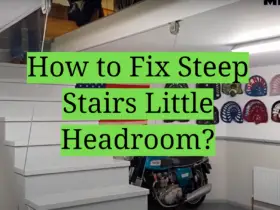
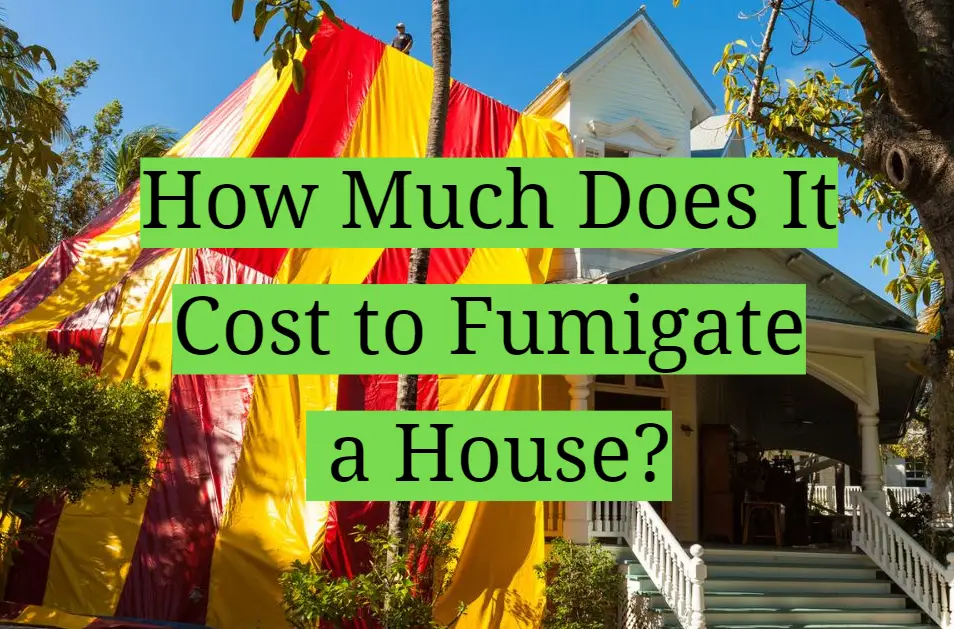
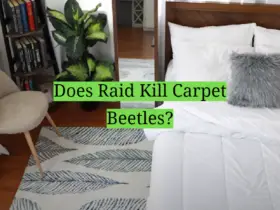
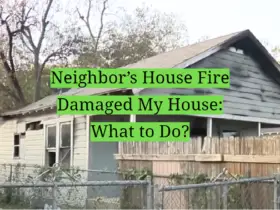
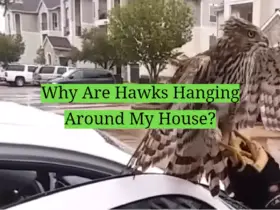

Leave a Reply